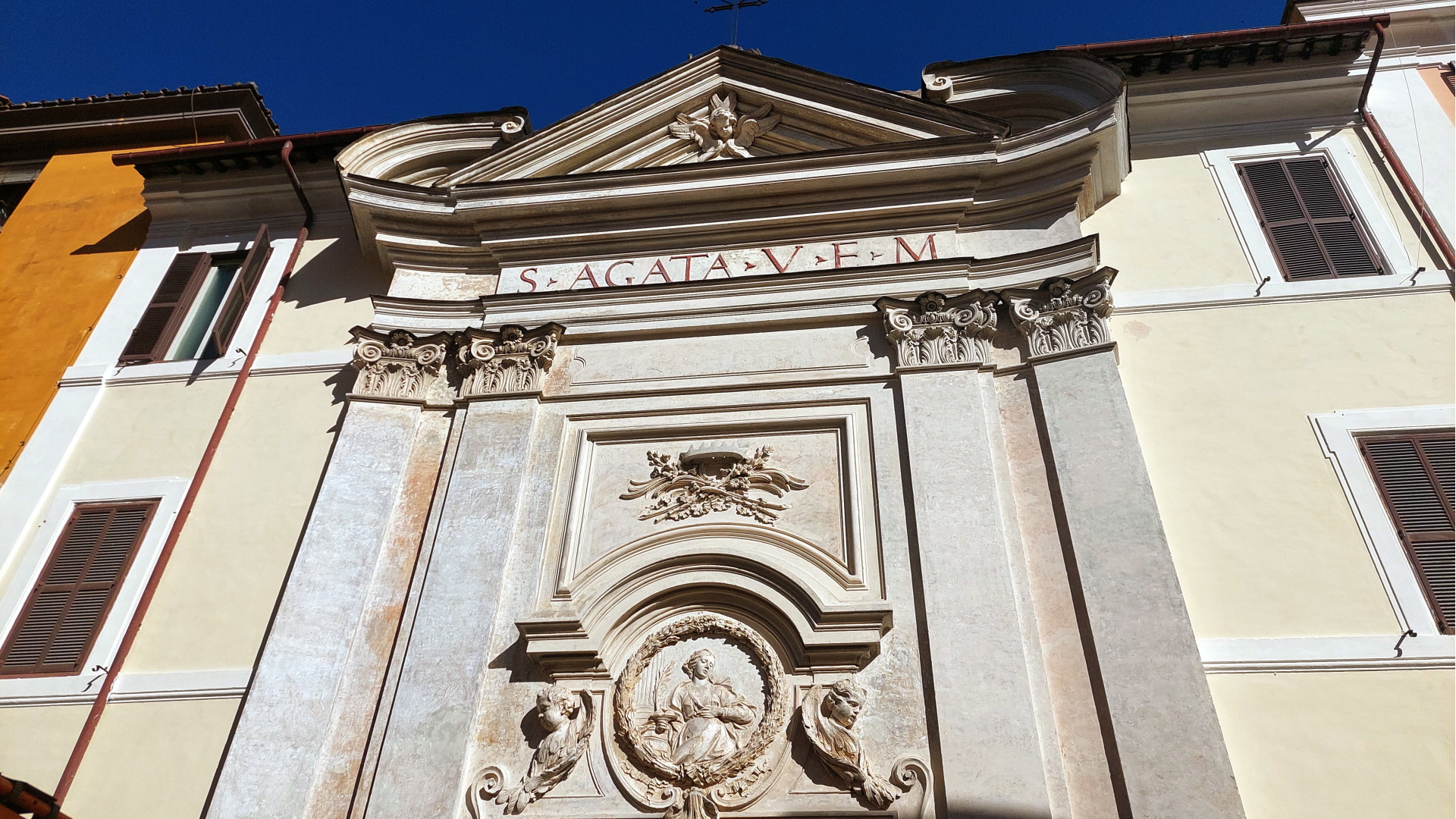
Squeezed between two buildings of what used to be its monastery, its façade dates from the 18th century, but this small church in the Rione Monti is one of the earliest Roman deacons and thus has very ancient origins: it was possibly founded or restored in the 5th century by Flavius Ricimer, a Romanized Germanic commander of the Western Roman Empire, and immediately became a gathering center for Rome’s Gothic community, which professed the Arian cult. A century later, once the Arianism had been suppressed as a result of the Gothic Wars, the building was taken over by the Catholic Church and reconsecrated by Pope Gregory the Great under the title of St. Agatha, one of the most famous martyrs of Christian antiquity. Between the 7th and 8th centuries it was restored under Pope Leo III, and it was probably then that the Benedictine monastery was built, the last medieval remains of which were demolished to make way for the Bank of Italy in 1926.
Stepping through the entrance portal, surmounted by an 18th-century stucco relief depicting the saint between two cherubs, a double flight of stairs leads to a four-sided cloister. In the center is a 16th-century well: the Medici coat of arms adorning it suggests that it was built on the occasion of Clement VII de' Medici’s visit to his nephew, Nicolò Ridolfi, who was cardinal rector of the church.
The interior, with three naves divided by 16 ancient columns, partly preserves the original structure, with Baroque and 19th-century additions. A 17-th century work, for example, is the coffered ceiling, made to a design attributed to Domenico Castelli, who in 1633 had directed work on the interior decorative apparatus on behalf of Cardinal Francesco Barberini. In the center of the nave it’s possible to admire remains of the original mediaeval Cosmatesque pavement made in the second half of the 15th century by Cardinal Francesco Gonzaga, to whom the pope had entrusted the monastic complex. Above the altar there is a 12th-century baldacchino with four columns of pavonazzetto marble, Cosmatesque decorations and a canopy. The fresco in the apse basin, with the Glory of St. Agatha, was painted in 1636 to replace an ancient mosaic that was destroyed in the 16th century when the apse collapsed.
Informationen
For the timetable of the masses and visiting conditions, please consult the contacts.
 Condividi
Condividi
Location
Um mehr über alle barrierefreien Dienste zu erfahren, besuchen Sie den Abschnitt barrierefreies Rom.











































